#agile vs waterfall
Text
Project Development Methodologies – Agile Vs. Waterfall | SynergyTop

Dive into the world of Project Development Methodologies with our latest blog at SynergyTop! 🚀 Explore the dynamic comparison between Agile and Waterfall approaches, uncovering the pros and cons of each in the realm of project management methodologies. 💡 Gain insights into choosing the right methodology for your projects. 🔄 Stay ahead in the development game with SynergyTop’s expert analysis. Read more at SynergyTop and elevate your project management strategy!
#agile vs waterfall#waterfall vs agile#project management methodologies#agile project management methodology#waterfall project management methodology#agile methodology pros and cons#waterfall and agile methodologies#project management methodologies comparison#pros and cons of waterfall methodology#difference between waterfall and agile methodology#agile project management#waterfall project management#difference between waterfall and agile
0 notes
Text

#Software development#Custom software development#Agile software development#Agile vs waterfall#Software development Canada#technology#software#development#software development#software company#canada
1 note
·
View note
Text

Agile methodology is a flexible and iterative strategy that allows teams to quickly adjust to changing project needs and deliver high-quality solutions in less time. In software development, agile is frequently utilized.
0 notes
Text
Agile Vs Waterfall Methodology: Which Is the Best for Your Project?
"Choosing the right project methodology is key to success. Delve into the battle of Agile vs. Waterfall methodologies and find out which one aligns best with your project's unique needs. Unlock the power of efficient development and make informed decisions to propel your project forward."
https://jumpgrowth.com/agile-vs-waterfall-methodology/
0 notes
Text
Choosing the Pinnacle: A Guide to Selecting Optimal Mobile App Development Services
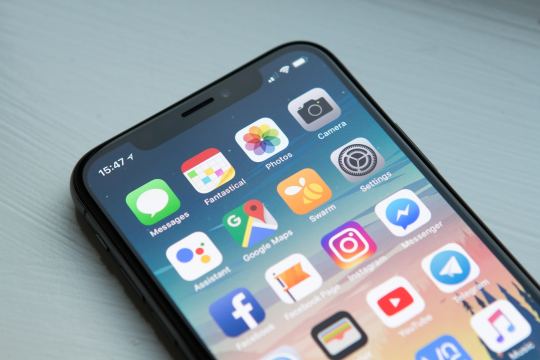
I. Introduction
In the fast-evolving digital era, mobile applications have become indispensable tools for businesses and individuals alike. However, the success of a mobile app heavily relies on the expertise and efficiency of the development services behind it. This article serves as a comprehensive guide to assist in the judicious selection of mobile app development services, ensuring the realization of a robust and successful application.
II. Understanding Your Project Requirements
Defining Project Scope
Crafting a successful mobile app starts with a meticulous definition of the project scope. This involves a detailed analysis of the desired functionalities and features, considering the unique needs of the target audience.
Platform and Technology Considerations
Choosing the right platforms (iOS, Android, or cross-platform) is pivotal. Additionally, selecting appropriate technologies and frameworks that align with the technical requirements of the project is crucial for its success.
III. Assessing Development Expertise
Portfolio Examination
A thorough review of the development company's portfolio is essential. This involves assessing past projects and industry experience, gauging the diversity and complexity of their work to ascertain their expertise.
Client Testimonials and Reviews
Client testimonials and reviews provide valuable insights into the reputation of a development company. Understanding client satisfaction levels, project management efficiency, and adherence to timelines is imperative.
IV. Development Methodologies and Practices
Agile vs. Waterfall Approaches
Choosing between Agile and Waterfall methodologies involves understanding their impact on project flexibility and adaptability. Selecting the most suitable approach is critical for seamless development.
Quality Assurance and Testing Procedures
The development company's approach to quality assurance and testing is paramount. Rigorous testing for functionality, security, and user experience ensures a polished and reliable final product.
V. Cost and Timeline Considerations
Transparent Pricing Models
Understanding different pricing models, including fixed, hourly, and dedicated team arrangements, is crucial. Ensuring transparency in cost breakdowns and anticipating potential additional charges is part of prudent decision-making.
Project Timeline Projections
Establishing realistic project timelines is essential for effective planning. Discussing milestones, deliverables, and potential setbacks ensures a clear roadmap for project completion.
This guide equips decision-makers with the insights needed to navigate the multifaceted process of selecting mobile app development services, laying the foundation for a successful and impactful mobile application.
4 notes
·
View notes
Video
youtube
Kanban, Waterfall, and DevOps are three different approaches to project management and software development. Here's an overview of each concept:
1. Kanban:
Definition:
Kanban is a visual management method for software development and knowledge work. It originated from manufacturing processes in Toyota and has been adapted for use in software development to improve efficiency and flow.
Key Concepts:
Visualization: Work items are represented on a visual board, usually with columns such as "To Do," "In Progress," and "Done."
Work in Progress (WIP) Limits: Limits are set on the number of items allowed in each column to optimize flow and avoid bottlenecks.
Continuous Delivery: Focus on delivering work continuously without distinct iterations.
Advantages:
Flexibility in responding to changing priorities.
Continuous delivery of value.
Visual representation of work enhances transparency.
Use Case:
Kanban is often suitable for teams with variable and unpredictable workloads, where tasks don't follow a fixed iteration cycle.
2. Waterfall:
Definition:
The Waterfall model is a traditional and sequential approach to software development. It follows a linear and rigid sequence of phases, with each phase building upon the outputs of the previous one.
Phases:
Requirements: Define and document project requirements.
Design: Create the system architecture and design.
Implementation: Code the system based on the design.
Testing: Conduct testing to identify and fix defects.
Deployment: Deploy the completed system to users.
Maintenance: Provide ongoing support and maintenance.
Advantages:
Clear structure and well-defined phases.
Documentation at each stage.
Predictable timelines and costs.
Disadvantages:
Limited flexibility for changes after the project starts.
Late feedback on the final product.
Risk of customer dissatisfaction if initial requirements are misunderstood.
Use Case:
Waterfall is suitable for projects with well-defined requirements and stable environments where changes are expected to be minimal.
3. DevOps:
Definition:
DevOps (Development and Operations) is a set of practices that aim to automate and improve the collaboration between software development and IT operations. The goal is to shorten the development lifecycle, deliver high-quality software, and foster a culture of continuous integration and delivery.
Key Practices:
Continuous Integration (CI): Merge code changes frequently and automatically test them.
Continuous Delivery/Deployment (CD): Automate the release and deployment processes.
Collaboration: Promote collaboration and communication between development and operations teams.
Advantages:
Faster delivery of software.
Reduced manual errors through automation.
Improved collaboration and communication.
Use Case:
DevOps is suitable for organizations aiming to achieve faster and more reliable delivery of software through the automation of development, testing, and deployment processes.
#mktmarketing4you #distributionchannels #HoshinPlanning #Leanmethods #marketing #M4Y #lovemarketing #IPAM #ipammarketingschool #Kanban #ContingencyPlanning #virtual #volunteering #project #Management #Economy #ConsumptionBehavior #BrandManagement #ProductManagement #Logistics #Lifecycle
#Brand #Neuromarketing #McKinseyMatrix #Breakevenanalysis #innovation #Facebook #icebergmodel #EdgarScheinsCultureModel #STARMethod #VRIO #7SFramework #gapanalysis #AIDAModel #SixLeadershipStyles #MintoPyramidPrinciple #StrategyDiamond #InternalRateofReturn #irr #BrandManagement #dripmodel #HoshinPlanning #XMatrix #backtobasics #BalancedScorecard #Product #ProductManagement #Logistics #Branding #freemium #businessmodel #business #4P #3C #BCG #SWOT #TOWS #EisenhowerMatrix #Study #marketingresearch #marketer #marketing manager #Painpoints #Pestel #ValueChain # VRIO #marketingmix
We also left a video about Lean vs Agile vs Waterfall | What is Lean | Difference between Waterfall and Agile and that could help you. Later we will leave one about Kanban:
2 notes
·
View notes
Text
⚝ Changes regarding Episode 12 of Hirogaru Sky! Precure
As I said before, I really disliked Episode 12 of Hirogaru Sky Precure. Being an important episode regarding Kabaton and the Undergu Empire, for the sake of my roleplay of Sora/Cure Sky, I'll change a few things of this episode. These changes I'll consider my "canon" and use them during my roleplay.
First of all. This episode will be split in two episodes. The "training episode" and the "fight episode".
I'm strong!!! Cure Sky VS Kabaton - Part 1
Kabaton is alone, saving Undergu Energy and regarding what the ruler of Undergu Empire said about being his final chance. He trembles with fear and curses the Precure for his misfortune.
Later, Sora and the gang went to the shopping district to buy a few ingredients that Yoyo-san needs for some experiments she is doing. Mashiro says "Where do we find these kind of ingredients around here?"
Kabaton appears before them and challenges Sora for a final battle. Differently from the episode, Mashiro and Tsubasa say they'll fight alongside her, but Sora refuses. "This is something that started between me and Kabaton. We'll end this and you'll leave Princess Ellee alone if I win."
They later discuss if this is the best thing to do and Sora says they have no other options. "We must do anything to protect Ellee-chan, even if it is something dangerous!"
Sora goes with Mashiro, Ageha and Tsubasa to the mountains just like happened in the episode. (I think that's the only part I really enjoyed about the episode XD)
This episode had a lot of jokes regarding Sora's training that really bothered me. She went there to train her body, mind and spirit for her final battle against Kabaton and that's what she does. During three days, she trains hard while Mashiro, Tsubasa and Ageha supports her. I'll scrap the entire sequence of "Lord of the Mountain and Waterfall" jokes and I'll replace with Ageha planning different trainings to improve what Sora lacks. Tsubasa and Mashiro decides to take part of this training as well, saying it will be useful for future events. Mashiro trains her stamina, Sora her ability to decide things quickly and Tsubasa his agility while on the ground.
After the training reaches its final day, they celebrate with a barbeque. Sora eats hamburger for the first time and she LOVES IT. After eating, Mashiro and Tsubasa says that they supports Sora's decision, but this battle is not only hers. They also are fighting to protect Ellee-chan and she needs to rely more on them as well. Sora agrees and apologizes for being selfish in such a hard time. Sora decides that they'll fight as a team. The episode ends the next day. They are returning home and Sora is looking towards the sky, decided to win this battle. It also shows Kabaton with an angry face, saying he is ready.
The Final Showdown!!! Cure Sky VS Kabaton - Part 2
Before meeting Kabaton, Yoyo prepares a complete breakfast for Sora and the others. Sora meets Kabaton and announces that everyone will take part of this fight. Kabaton teases her, saying "You finally admit to be scared of facing me alone Gwahahahaha!! It doesn't matter, I'll defeat you anyway!"
Everyone transforms and Kabaton uses the Undergu Energy to power-up! He enters his "Bestial Form": A dark aura surrounds his entire body, big fangs appears from his mouth, he becomes more muscular, the hair on top of his head grows, claws appear from his fingers and the jewel on his forehead begins to glow. Dark clouds appear and turn the entire sky black. The Undergu Empire ruler is watching the battle.
They have an intense fight, Kabaton resists several attacks from the team and most of them has no impact at all. Ageha is watching from afar with Princess Ellee. They use everything they learned during their training, but they still have trouble to land strong blows. After Princess Ellee sends her power to them, the team is able to come with a strategy and defeat him for good.
"It's over Kabaton! As promised, leave Princess Ellee alone and retreat!"
4. Lightning begins to crackle above them and thunder to roar. Kabaton starts trembling and sweating a lot. He is frozen in fear, looking toward the dark clouds. Sky notices this and asks herself why he is acting this way. He seems... scared.
"The Undergu Empire... doesn't admit weak people. That's why I act tough all the time... to protect me from..."
"Kabaton! You disappoint me! It's your final chance to prove your value!"
5. A mysterious voice echoes through the entire battlefield. The jewel on his forehead glows red and Kabaton screams. He now turns into a giant Ranborg, losing control. His eyes are red and he is screaming and attacking everything around him, destroying the entire place. After a short battle, Sky and Prism purify him with Updraft Shining, reverting him back to his usual form.
"The weak has no value in the Undergu Empire! Begone!"
6. The ruler of the Undergu Empire brings Kabaton to the clouds and sends several strong thunderbolts to punish Kabaton for his failures. He closes his eyes, waiting for his demise. Sky summons the Sky Mirage and use it to block the attacks.
"Kabaton!! I'll save you!!!"
"Precure... Do you dare to defy me?"
She sends more bolts. Prism and Wing appears, blocking several of them as well. They position themselves around Kabaton, protecting him from her.
7. "This is not the last time we'll meet, Precure! Be prepared!"
The voice disappears and the dark clouds vanishes. When they finally land on the ground, Kabaton asks why Sky and the others protected him, despite being their enemy.
"It was the right thing to do. A Hero must protect everyone from danger!!"
Kabaton is moved by Sky's determination and finally realizes she is, indeed, a true Hero. Kabaton smiles and quickly disappears after Sky went to her friends' side. The jewel on his forehead cracks, freeing himself from the Undergu Empire's hands.
8. The episode ends with Sora and the others talking about the Undergu Empire and vowing to protect Princess Ellee-chan from them.
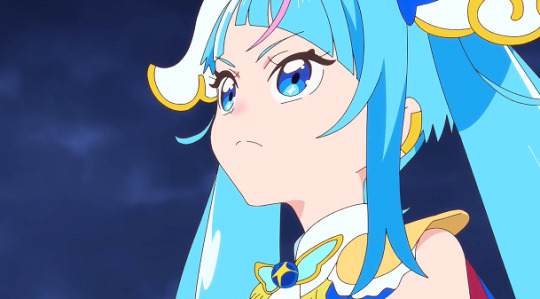
x - x - x - x - x - x - x - x
//I think this still needs some work, but I think it's a better conclusion for Sky x Kabaton arc. The final part of the episode was too rushed and the Undergu Empress didn't punish Kabaton for his failures, giving up too quickly after Sky protected him.
So, I'll consider this as the final battle of Sky and Kabaton. I hope all of you like it. Please, don't reblog this post. It's part of my portrayal of Cure Sky in the Precure RP Community.
Thanks for reading <3
2 notes
·
View notes
Note
hey, i've been reading your Cisco-related Flash fics, and what struck to me as impressive is how you implement the mentions of tech so well. i've run into trouble into writing scenes, where Cisco might have to tinker. 🤧🤧🤧 i know this is by a long-shot, however, do you have any writing advice on how to add tech as part of a scene??? or like wording on how tinkering works?? idk just basic tech stuff i guess. thank you and sending good ~~vibes~~ your way!
Cisco tinkering is definitely fun to write, but I'm not exactly sure how to describe my process for writing those scenes. But I'll give it a shot anyway.
So Cisco's tinkering with tech in fics usually fits one of two scenarios when I'm writing. Either it's to give him something to do in the scene since Cisco's definitely someone who likes to keep his hands busy. Or it's a specific tech I plan to use for plot reasons, so it gets threaded throughout the fic. That way Cisco's brilliant ideas to save the day don't come out of nowhere.
If its the former, then I'll usually just pick something we know he's worked on in the show. The quickly forgotten Boot Tech (how useful it would have been if perfected instead of forgotten after the S2 finale), updates on the suppressant tech (the cuffs, Caitlin's snowflake necklace), the weather wand... I don't really have to go too much into detail on it, but it can be fun to poke at canon a bit for all the things Cisco develops that never show up again once their original use in the plot is over. Sometimes I just have him working towards perfecting something that didn't work as expected. Other times I have ideas for alternative uses for the tech that can be fun to mention.
I've also been a Star Trek and Stargate fan for a long, long time. So I've learned technobabble from the two scifi series that did it best. ^_^
Though, really, watching Sam Carter (SG-1) and Rodney McKay (Stargate: Atlantis) spout technobabble is a great way to learn how to make made up science blend with real science to sound relatively believable. Stargate (SG-1 particularly) was pretty good about grounding their made up science in real world concepts. Definitely having obsessively watched those two shows has helped shape how I write Cisco now that I'm in the Arrow verse fandom.
When I have Cisco's tech being used in a specific way for plot reasons, however, I definitely have to know ahead of time what the tech is for. If I'm going to make, say, the Rainbow Raider the villain of a story and have him experimenting with new applications of his powers - messing with emotions other than anger - then I'd have Cisco pull out the device they originally used to combat Rainbow Raider's powers to work on upgrading for the new scenario. That way it still works when they need it. Then I can throw in things like, maybe it gets pulled out of mothballs and immediately tried on one of RR's victims but it doesn't work. Cue drama. :D
I think some of the development process I put in there comes from what I know about tech development from a software side of things. Since I'm a software engineer, I know how different types of design and development models work. Waterfall vs agile vs... anyway, I won't necessarily ever name the dev model being used, but it'll influence how I write Cisco's development process and it'll differ based on when he's working with a team, vs one other person, vs on his own.
Having Cisco collaborate is especially fun to do. Cisco starts off as a particularly brilliant mechanical engineer and by the time he leaves the show he's become very much a multi-discipline scientist. He does so because he learns so much from the people he collaborates with - or competes with, as the case may be. Cisco's knowledge of sonic technology and acoustical engineering improves due to his exposure to Hartley's Pied Piper gear. He learns bio engineering from his many collaborations with Caitlin. Harry being rather multi-disciplined himself, often pushes Cisco to have more confidence in himself and reach beyond his comfort zone.
So I'll pick who he's collaborating on based both on when I want a story to be set, how AU I want it to be (Hartley joins Team Flash? Harry doesn't leave post S2?), and what kind of tech is being developed for the plot (improving the amnesia inducer they used on Barry? that calls for Caitlin).
A story that I've been wanting to write is Cisco mentoring Chester while Chester creates tech that - predictably, I admit - saves Barry out on the field at the end. We never really got the mentor/mentee relationship between them expanded on the way I'd been hoping for when it became clear Chester was a permanent addition to the cast. The story hasn't happened yet because I haven't really fleshed out what the technology they're working on will be. I'm probably overthinking it a bit at this point, but I want it to reflect where Chester's at mentally during the story - his struggles with self doubt and learning to be more assertive, generally showing why Cisco felt so comfortable leaving Team Flash in Chester's hands when he eventually leaves. (So it's intended to be canon compliant and set before Cisco and Kamilla leave for Star City.)
I don't know how useful my rambles have been, but I hope this helps.
2 notes
·
View notes
Text
Discovering the ideal approach for healthcare software development?
Dive into our latest comparative analysis of Agile vs. Waterfall methodologies! Agile's iterative nature fosters adaptability, collaboration, and quicker response to changing requirements, ideal for dynamic healthcare environments. Meanwhile, Waterfall's sequential structure offers clarity and predictability, suiting projects with well-defined objectives. Which is right for your healthcare software project?
1 note
·
View note
Text
youtube
Dive into the Battle of Titans: Agile vs. Waterfall
In this video of Dive into the Battle of Titans: Agile vs. Waterfall, we unpack the two most popular project management methodologies. We'll delve into their strengths, weaknesses, and ideal use cases to help you decide which approach is best for your next project. Whether you're a seasoned manager or just starting out, this episode will equip you to make informed decisions for your projects.
Click here to know more: https://www.marsdevs.com/blogs/dive-into-the-battle-of-titans-agile-vs-waterfall
0 notes
Text
The Agile Edge: Million-Dollars Product Engineering Methodologies
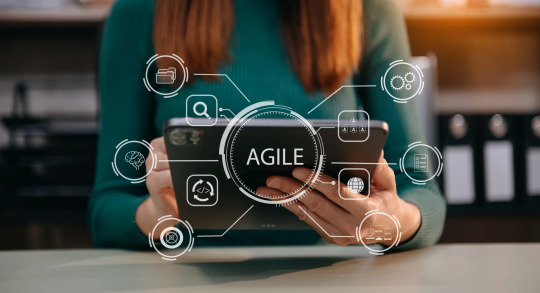
Agile methodologies have revolutionized product engineering, departing from traditional approaches and influencing various industries. This article explores how Agile principles have reshaped product development, emphasizing dynamic, customer-focused processes within Agile Product Engineering. It will highlight the benefits and challenges of integrating Agile into product engineering.
Understanding Agile Methodologies
Agile emerged in 2001 with the publication of the Agile Manifesto, a response to the limitations of traditional software development models like Waterfall. Founded on four principles, Agile emphasizes human interaction, delivering functional software, ongoing customer collaboration, and flexibility to adapt to change. These principles drive iterative and incremental development processes, fostering collaboration and responsiveness in product engineering.
The Evolution of Product Engineering
Product engineering traditionally followed sequential models like Waterfall, rooted in industries where changes are costly and time-consuming. However, the fast-paced technological landscape and evolving market demands necessitated a shift towards Agile methodologies.
Agile's iterative approach enables teams to adapt to changing requirements and market conditions swiftly. This transition to Agile has fostered environments prioritizing collaboration, speed, and customer satisfaction, revolutionizing product engineering to be more responsive and innovative.
Benefits of Agile in Product Engineering
Agile methodologies reduce time to market by embracing iterative development and quick adaptation to market changes, ensuring products are relevant and timely.
Enhanced collaboration and transparency in Agile teams foster better information flow and cohesive dynamics, breaking down silos.
Continuous testing and feedback loops in Agile ensure improved product quality through early issue detection and resolution.
Agile's customer-centric approach involves regular customer interaction and feedback integration, enhancing satisfaction and reducing the risk of developing irrelevant products.
Cross-functional collaboration and Risk Management
Agile emerged on the foundation of self-organizing, cross-functional teams. These teams bring together diverse skills and perspectives, fostering a more holistic approach to problem-solving. This team structure empowers members to take ownership of their work and encourages innovative solutions, enhancing team morale and productivity.
Agile's iterative nature allows teams to assess and manage risks continuously. Regular reviews and retrospectives help identify potential issues early, allowing for timely interventions. Agile also encourages experimentation and learning from failures, essential for innovation and continuous improvement in product engineering.
Challenges in Implementing Agile Methodologies
Implementing Agile methodologies requires a significant cultural shift, embracing collaboration, continuous learning, and adaptability. Resistance to change can hinder adoption due to Agile's need for openness and transparency. Scaling Agile to larger teams adds complexity, requiring effective communication and coordination for consistency.
Maintaining a balance between flexibility and project management controls is crucial to prevent projects from becoming unstructured or deviating from objectives. Finding the right balance between agility and aligning with business goals remains a critical challenge in Agile implementation.
Agile vs. Traditional Methodologies: A Comparative Analysis
Comparing Agile and Waterfall Methodologies
Agile is a form of iterative development where requirements and solutions evolve through collaboration. It offers flexibility, promotes customer involvement, and allows for rapid change adaptation.
Waterfall
The Waterfall methodology follows a sequential design process, typically used in software development, where progress flows downwards through distinct phases. It is known for its structured approach, with each stage requiring full completion before the next begins.
Advantages and Limitations
Advantages of Agile
1. Greater adaptability to changing requirements.
2. Enhanced customer satisfaction due to continuous involvement.
3. Early and predictable delivery.
4. Improved product quality through frequent testing.
Advantages of Waterfall
1. Clear structure and milestones.
2. Easier to manage due to its linear nature.
3. Well-suited for projects with well-defined requirements and limited scope changes.
Limitations of Agile:
1. It can be challenging to scale in large organizations.
2. Requires a significant shift in organizational culture.
3. Risk of scope creep without proper project control.
Limitations of Waterfall:
1. Less flexibility to adapt to changes.
2. Due to the lengthy development cycle, there is a higher risk of delivering a product that fails to meet current market needs.
3. Needs to be more efficient in addressing issues that arise late in the development process.
Future Trends and Agile's Evolving Role
As emerging technologies like AI, IoT, and blockchain shape the future, Agile methodologies will evolve to accommodate rapid iteration and flexibility in product engineering. This evolution will include integrating these technologies for more automated decision-making processes. Agile will also increasingly prioritize enhancing customer experience through deeper involvement and feedback loops, while promoting sustainability by developing products with lower environmental impact and incorporating sustainable practices throughout the development lifecycle.
Conclusion
Agile methodologies have proven to be game-changers in the product engineering industry, offering flexibility, improved collaboration, and a stronger focus on customer needs. However, the journey to fully integrating Agile into a product engineering company involves overcoming significant cultural, organizational, and scaling challenges. Looking ahead, Agile will adapt and evolve with emerging technologies and market trends, emphasizing customer experience and sustainability in product development processes.
#Agile Product Engineering#Product engineering services#Product engineering company#Software product engineering services#Digital product engineering services#Product engineering services company
1 note
·
View note
Text
#mitsde#distance learning#distance education#distance mba#distance courses#distance learning mba#distancelearning#pgdm#pgdm course#pgdm colleges#distance learning school#mba programs#mba#mba courses#mbacollege#admission#mbadistance#project management tools#projectmanagement#project manager#project managers#project management software#project management#agile project management#waterfall project management#waterfall#applynow
0 notes
Text
🔄 The Agile Revolution in IT Project Management 🔄
In the dynamic world of IT, Agile methodologies have become the game-changer, transforming project management with their emphasis on flexibility, responsiveness, and stakeholder satisfaction. 🚀💡 #AgileMethodology #TechInnovation
Real-World Success Stories:
- Tech Giants like Google & Yahoo: Leveraging Scrum, Google AdWords saw significant enhancements, while Yahoo! managed to cut development time and streamline team sizes, proving Agile's efficacy in large-scale operations. 🌐
- Finance Sector Agility: Faced with stringent regulations, a consumer finance company adopted Agile for faster, more flexible system revamps, showcasing Agile’s prowess in navigating complex environments. 💳
- Insurance Industry Efficiency: An insurance firm slashed cycle times by 20% and saved millions by shifting to Agile Scrum, enhancing customer satisfaction and reducing costs. 📉
- Cultural Shifts: Organizations are using Agile not just for technical tasks but to foster cultural transformations, aligning more closely with Agile values for improved agility and value delivery. 🌟
Agile vs. Waterfall: A Comparative Study
A study comparing Agile to traditional Waterfall methods highlighted Agile's initial challenges but eventual superiority in productivity, speed, and cost efficiency, emphasizing its capacity for rapid adaptation. 📊
Key Takeaways:
- Flexibility & Responsiveness: Agile’s ability to adapt to changes ensures products stay relevant and valuable.
- Stakeholder Satisfaction: Continuous engagement with stakeholders keeps the project aligned with their needs.
- Empowered Teams: Agile nurtures transparency and collaboration, boosting team morale and engagement.
- Efficiency: The iterative approach of Agile minimizes risks, delivering projects faster and more cost-effectively.
Agile methodologies are reshaping IT project management, proving that adaptability, continuous improvement, and a focus on customer-centricity aren't just beneficial; they're essential for success in today’s fast-paced IT landscape. 🌍✨
#ProjectManagement #AgileTransformation #SuccessStories #DigitalTransformation #TechTrendsAI

🔄 The Agile Revolution in IT Project Management 🔄
In the dynamic world of IT, Agile methodologies have become the game-changer, transforming project management with their emphasis on flexibility, responsiveness, and stakeholder satisfaction. 🚀💡 #AgileMethodology #TechInnovation
Real-World Success Stories:
- Tech Giants like Google & Yahoo: Leveraging Scrum, Google AdWords saw significant enhancements, while Yahoo! managed to cut development time and streamline team sizes, proving Agile's efficacy in large-scale operations. 🌐
- Finance Sector Agility: Faced with stringent regulations, a consumer finance company adopted Agile for faster, more flexible system revamps, showcasing Agile’s prowess in navigating complex environments. 💳
- Insurance Industry Efficiency: An insurance firm slashed cycle times by 20% and saved millions by shifting to Agile Scrum, enhancing customer satisfaction and reducing costs. 📉
- Cultural Shifts: Organizations are using Agile not just for technical tasks but to foster cultural transformations, aligning more closely with Agile values for improved agility and value delivery. 🌟
Agile vs. Waterfall: A Comparative Study
A study comparing Agile to traditional Waterfall methods highlighted Agile's initial challenges but eventual superiority in productivity, speed, and cost efficiency, emphasizing its capacity for rapid adaptation. 📊
Key Takeaways:
- Flexibility & Responsiveness: Agile’s ability to adapt to changes ensures products stay relevant and valuable.
- Stakeholder Satisfaction: Continuous engagement with stakeholders keeps the project aligned with their needs.
- Empowered Teams: Agile nurtures transparency and collaboration, boosting team morale and engagement.
- Efficiency: The iterative approach of Agile minimizes risks, delivering projects faster and more cost-effectively.
Agile methodologies are reshaping IT project management, proving that adaptability, continuous improvement, and a focus on customer-centricity aren't just beneficial; they're essential for success in today’s fast-paced IT landscape. 🌍✨
#ProjectManagement #AgileTransformation #SuccessStories #DigitalTransformation #TechTrendsAI
0 notes
Text
Building Team Spirit with Agile:
An hour-long mindset session for Digital Engagement.
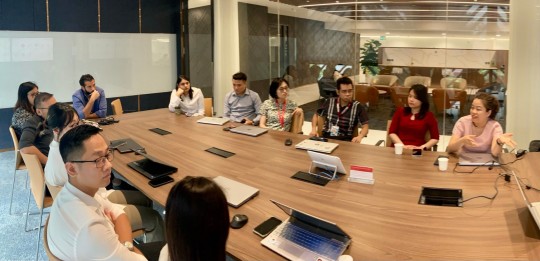
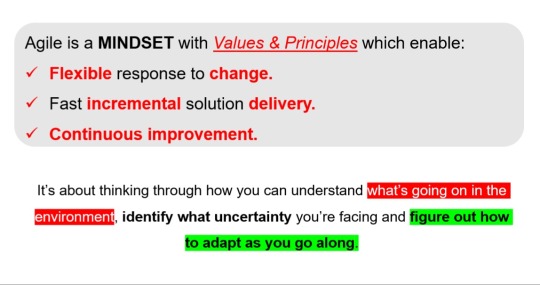
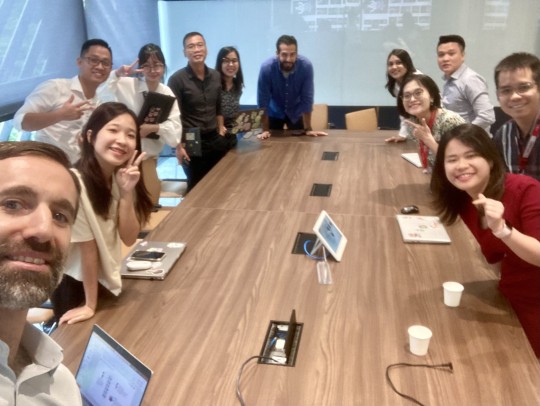
The Digital Engagement team, eager to boost their team spirit and drive more impactful marketing campaigns, approached me for an Agile Mindset session. While Agile isn't just a magic bullet, we aimed to introduce its core principles and explore how they could benefit their teamwork and campaign performance.
In this hour-long session, we:
Journeyed through Techcombank's Agile Transformation: We showcased how Agile is shaping our organization, helping everyone understand its bigger picture.
Debunked Waterfall vs. Agile: By comparing Waterfall's rigidity with Agile's iterative approach, we highlighted the benefits of flexibility and continuous improvement.
Cracked the Agile Mindset Code:
We explored the essence of Agile – values, principles, and the shift from scope-driven to value-driven mindsets.
Emphasized Product over Project:
We discussed how focusing on delivering valuable outcomes, not just completing tasks, leads to more impactful campaigns.
Empowered Self-Organized Teams: We emphasized the importance of collaboration, ownership, and continuous learning within a team structure.
By the end, the team buzzed with excitement!
We identified establishing a shared vision as the next crucial step to build their Agile foundation.
Now, we're excited to collaborate on crafting their vision and witnessing how it fuels their team spirit and unlocks the potential of their campaigns!
#agiletransformation#customerengagement#agile#vision#teamspirit#teamperformance#techcombank#business agility
0 notes